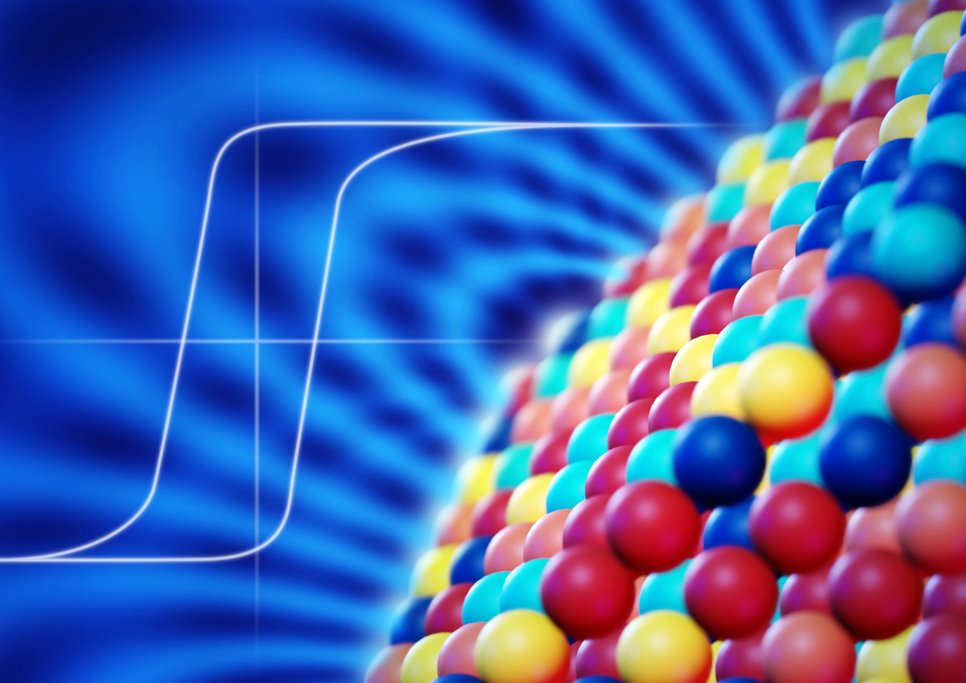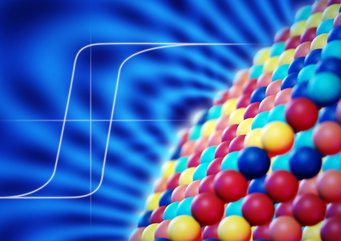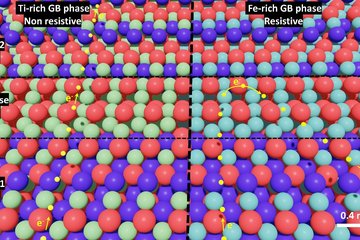Optimized magnets for the energy transition
European Innovation Council supports a research project led by Technical University Darmstadt with 3 million euros
Magnets are key materials for the energy transition. However, they often consist of critical raw materials. Scientists led by TU Darmstadt are now researching alternative magnetic materials as part of the “CoCoMag“ project. The European Innovation Council (EIC) is funding the project with three million euros.
The European Union is 100% dependent on foreign suppliers in 14 out of 27 critical raw materials, which are a prerequisite for a successful transformation to a carbon neutral society. At the same time, the energy, conversion and usage systems are radically changing to face the challenges of global warming and humanity's ever-increasing need for energy. The old world, dominated by oil and coal, must be replaced by a new and cleaner one, fueled by increasingly cheap electricity from sun, wind and water. By the end of the decade, solar power will be more affordable than power derived from conventional fossil fuels. However, having enough low-cost renewable energy is only the starting point. A real transition towards a sustainable economy is only possible with the electrification of our infrastructures, which is highly dependent on innovative magnetic materials. The European Innovation Council is now supporting a European wide research project on advanced magnetic materials coordinated by the Technical University Darmstadt with three million euros for three years.
Better magnets independent of rare-earth elements and cobalt

“The aim of the project is to synthesize, produce and test new alloys suitable for permanent magnets and magneto-caloric applications without using rare-earth elements and cobalt. This step is crucial to accelerate the electrification of our infrastructures”, explains Oliver Gutfleisch, professor for Functional Materials at the Technical University Darmstadt and coordinator of the new project. The researcher team consisting of eight partners from six European countries, proposes a novel concept for magnetic materials, by applying compositionally complex alloys (CCAs). This concept is derived from the high-entropy alloys (HEAs) design strategy, which is a new alloying strategy that combines multiple principal elements in relatively high (often equiatomic) concentrations. “The CCA concept does not have a strict limitation on the near equal ratio of the different elements, but provides a higher design freedom and enables developing sustainable magnets with excellent mechanical properties, corrosion resistance and shapeability”, says Dr. Liuliu Han, project leader at the Max-Planck-Institut für Eisenforschung, which is project partner, too.
Compositionally complex alloys pave the way for further electrification
The CoCoMag (Multi-property Compositionally Complex Magnets for Advanced Energy Applications) project is supported by the EU's “Pathfinder Open” funding line, which aims to identify radically new technologies that have the potential to create entirely new markets. To this end, visionary and high-risk projects are funded at an early stage of development. The project includes the Technical University of Darmstadt (Germany), University of Seville (Spain), Max-Planck-Institut für Eisenforschung (Germany), Danube University Krems (Austria), Chalmers University of Technologies (Sweden) and companies from Germany, Italy and Greece. The newly granted project paves the way for a disruptive change in the e-mobility and cooling sectors, which currently rely on rare-earth elements and cobalt – highly limited elements. New innovative magnets derived from compositionally complex alloys will be less costly, lower the negative ecological footprint and maximize targeted properties.
Authors: Oliver Gutfleisch, Semih Ener (both TU Darmstadt), Yasmin Ahmed Salem (MPIE)












